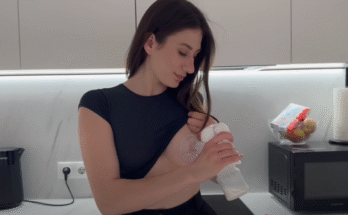This Once-Dated Kitchen Staple Is Now A Must-Have Collectible
By definition, trends don’t last forever. But some items have gone in and out of style so many times that they’re functionally timeless anyway; even if they’re less popular some years, they’re sure to make a resurgence again in the future. Copper cookware is one such item. Considered dated just a few years ago, copper cookware is now a must-have collectible. This kitchen staple is trending among vintage collectors and home decorators alike.
Copper cookware is back in style for a few reasons. First, sparkling copper pots and pans have a charm unlike other cookware. Many people love to proudly display their copper cookware as part of a homey kitchen aesthetic. Second, cooking with copper is a delight. The metal rapidly conducts heat, making it easy to control the temperature. Not only can you heat copper pots and pans more quickly, but you can cool it down quickly as well and avoid burning anything.
Third, copper cookware is a valuable collectible. It’s expensive to buy new, with some single pieces costing more than $500 and sets running in the thousands. That’s because copper is an expensive metal, and copper cookware is pricey to produce. But it can last a lifetime with proper maintenance, and since it’s so in demand now, resale value is good. Buying secondhand copper cookware is a great way to take part in the trend without shelling out too much money (and you can keep it on hand for the next time it comes back in style).
Tips for thrifting copper cookware
Copper must be lined with another metal to make it safe for cooking. Stainless steel is the most common modern lining, and the most durable. But tin is traditional, and tin-lined cookware is typically what’s in thrift stores. There are some caveats when shopping: tin linings don’t last forever, and in banged-up thrift store items, they may be damaged or worn away. If you can see the copper through the tin, it’s not safe to use for cooking, but you can have the piece re-tinned by a professional. Re-tinners can also fix issues like tarnish or buildup on the exterior. If you’d rather not shell out extra money, you can still use these thrift store finds to boost your kitchen’s aesthetic appeal.
Some pots or pans are copper-colored but are actually just regular nonstick cookware. To make sure you’re getting the real deal, take a good look at the color and texture and compare it to images of real copper; it should be a warm reddish-brown. Often, it has a handmade, hammered look since it’s so soft, and it develops a patina with age in the green-blue range (tin also develops a patina and can be anywhere from light gray to almost black). Copper is relatively heavy, so check the weight. Lastly, check for a maker’s mark or country of origin stamp.
To increase your chances of finding a great deal, expand your search to antique stores, flea markets, yard sales, and estate sales. If the tin itself is in good shape but the exterior is too heavily patinaed for you, refinish the copper with a polish such as Wright’s Copper Cream.
Caring for copper cookware
If you do use your copper pots and pans for cooking, avoid pre-heating since copper heats up so quickly that it’s not necessary. Tin-lined pans should only be used for low- to medium-heat cooking, because tin melts above 450 degrees Fahrenheit. The consequences are usually just cosmetic, but permanent damage is a possibility, especially if you don’t notice in time. Always add a fat or liquid before heating up tin-lined copper cookware.
For cleaning your copper pots, stick to plain dish soap and water. Don’t use steel wool or abrasive cleaners on tin-lined cookware; only copper cookware lined with stainless steel is tough enough to be scoured. Similarly, stick to wood and rubber utensils so you don’t scratch the tin. Never put copper cookware in the dishwasher or you may damage the finish. To prevent water spots, dry your pots and pans with a soft cloth.
Some people like the look of patina, and it also makes copper cookware even better at conducting heat. If you’re not a fan, make life easier by polishing your cookware regularly. After washing, mix two parts ketchup to one part fine sea salt, and apply it to the exterior for a few minutes before rinsing with cool water.
